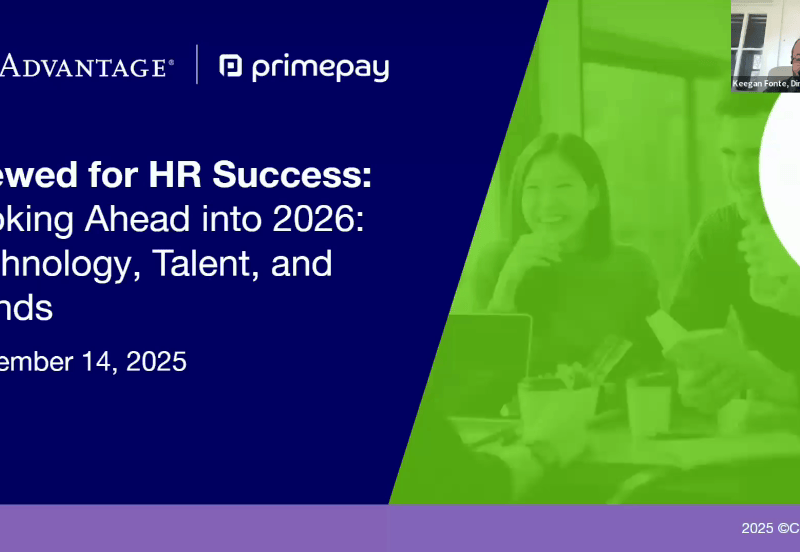Welcome to 2026, where dealing with scammers is the norm. If you’ve ever tried selling something online – or watch the news – you know that cybercriminals are out there, taking advantage of innocent and naive people.
Companies have always faced challenges related to fraud, and it’s becoming more serious than ever. CrowdStrike reports a 35% year-over-year increase in these “intrusion campaigns.” What’s even scarier is that these attackers are establishing control within systems faster than ever; one was recorded at an astounding 51 seconds.
It’s clear that businesses need the strongest security measures (ones that incorporate proactive steps and real-time threat protection) to prevent fraud. Below we discuss risks, best practices, and aspects to prioritize when creating an internal policy.
Understanding Payroll Security Risks
Payroll data contains some of the most sensitive employee information, like social security numbers, bank details, salaries, and tax records.
It’s no surprise that if this data falls into the wrong hands, the consequences can be severe (think identity theft, fraudulent payroll transactions, and embarrassing brand awareness). Understanding the risks is the first step in securing your payroll system.
Sensitive Payroll Data Vulnerabilities
Payroll data is a prime target for cybercriminals because it holds valuable financial and personal details.
It’s important to note that common vulnerabilities aren’t within payroll systems themselves. Instead, they occur when employees download data from the system and host it in an insecure location.
That’s why it’s best practice to store your data in one secure location (like your payroll software or HCM), not scattered among various emails and spreadsheets. This practice may seem obvious, but 63% of employees report they don’t always use the recommended tools, meaning data can be easily compromised if it lives elsewhere.
Below are the top ways cybercriminals access this secure information:
- Weak access controls: If too many employees have access to payroll data, the risk of fraud increases.
- Unsecured storage: Storing payroll files on local devices or unencrypted servers can expose them to hackers. Remember, if employees remove data from your payroll system, they’re responsible for keeping that data safe.
- Lack of monitoring: Without proper tracking, unauthorized changes to payroll records can go unnoticed.
Pro Tip: Watch your payroll system for any changes to payroll records or direct deposit accounts. Because your payroll software provider won’t know if these changes are legitimate, your payroll administrator should follow up with the employee before running payroll to ensure the change is accurate.
Types of Payroll Fraud
Payroll fraud can take many forms, and businesses of all sizes are at risk.
In fact, payroll fraud schemes account for 10% of all asset misappropriation incidents. What’s even worse? Because many companies don’t have the right processes in place, fraud usually goes undetected for an average of 18 months.
Some common payroll fraud schemes include:
- Ghost employees
- Timesheet fraud
- Direct deposit fraud
- Pay rate manipulation
- Expense reimbursement fraud
Cyber Threats
Cybercriminals continuously evolve their tactics, making payroll teams prime targets for attacks. These cybercriminals are usually external to the company and create payroll scams to exploit weaknesses in payroll processes or employees, such as:
- Phishing: Fraudulent emails trick employees into revealing payroll login credentials.
- Smishing: A type of phishing scam involving text messages. According to Keepnet, 76% of businesses report falling victim to smishing.
- Vishing: A type of phishing attack using phone calls; this type of fraud grew 442% between the first and second half of 2024.
- Ransomware: Malicious software locks payroll data until a ransom is paid.
Payroll Security Strategies
It’s not breaking news that businesses need a proactive security strategy to detect and prevent payroll fraud. But how to do it – especially with ever-changing technologies and the continued growth of scammers and bots preying on companies and employees – can feel overwhelming.
Your best bet is to utilize a mix of technology, policies, and employee awareness to help prevent fraud and unauthorized access.
Data Encryption and Access Control
Payroll systems should use AES-256 encryption, one of the strongest encryption standards, to secure sensitive data both in transit and at rest.
Additionally, businesses should:
- Enforce multi-factor authentication (MFA): Require a second verification step (such as a mobile app code) to prevent unauthorized access. MFA can block over 99.9% of automated cyberattacks, including those targeting payroll systems. Most payroll systems require MFA unless companies opt out, and it’s in your best interest not to.
- Implement role-based access controls (RBAC): Restrict payroll data access to only those who need it.
- Use secure cloud storage: Ensure payroll data is stored on encrypted, access-controlled servers rather than local devices. Again, payroll providers do this, but it’s a company’s responsibility to ensure this happens when sensitive data is pulled out of the system.
Fraud Detection and Prevention
A strong fraud prevention strategy combines proactive monitoring with reactive safeguards. Regular audits and tests by the IT team are key in identifying suspicious transactions or unauthorized changes to payroll records.
Additionally, using biometric tracking, such as fingerprint or facial recognition technology, helps reduce the risk of identity fraud by verifying employee identities during payroll processing.
Pro Tip: Set up automated alerts to detect unusual activity, such as sudden salary increases or duplicate direct deposits. These alerts allow Finance and IT teams to address potential fraud quickly.
Employee Training and Everyday Security Practices
Even the best security systems can fail if employees aren’t trained to spot threats. Unfortunately, 82% of breaches involve a human element, so it’s crucial for continued employee education on the topic.
Businesses should:
- Educate employees on payroll security: Train teams to recognize phishing emails and avoid suspicious links. Make sure you encourage employees to report phishing emails; only 3% of employees say they report suspicious communications, which can cause major security issues for organizations in the future.
- Enforce secure Wi-Fi usage: Require employees to access payroll systems only from secure, password-protected networks.
- Mandate logging out after use: Leaving payroll software open on shared devices creates unnecessary risks. Ensure your employees log out, and also choose software with a “time out” feature.
Payroll Security Compliance
Payroll security is also about compliance. Like all compliance mandates, businesses must follow strict regulations to protect employee data and avoid costly penalties.
Regulations and Standards
Several laws and standards govern payroll security, requiring businesses to safeguard sensitive data and report breaches promptly.
Two key regulations include:
- The Fair Labor Standards Act (FLSA): Ensures accurate record-keeping of wages and hours, reducing opportunities for payroll fraud.
- State Data Retention Laws: Some states have stricter rules on how long payroll data must be stored and how it should be protected.
Compliance Audits and Penalties
Failing to comply with payroll security regulations can result in costly penalties, lawsuits, and lasting damage to your company’s reputation.
To stay on top of these requirements, use a payroll system that conducts annual audits to ensure your payroll processes align with legal and compliance standards. These audits can also be invaluable because they help identify potential security gaps and ensure the business follows best practices.
Pro Tip: Report any payroll fraud reports promptly. Many regulations mandate that businesses notify affected individuals and authorities within a specific timeframe to avoid fines.
Responding to a Payroll Fraud
Even with strong security measures, payroll fraud can still happen. And as AI continues to evolve, cybercriminals will continue using it to target networks and learn in-depth information about business sectors, geographies, and technologies.
Therefore, a clear and immediate response plan is essential to minimize damage, protect employee data, and maintain compliance with reporting requirements.
If you suspect someone has unauthorized access to an account:
- Contact your payroll provider or bank immediately (and, if you’re an employee, your payroll/finance team) to report the suspicious activity. Early notification can help prevent further loss.
- Involve your internal IT or cybersecurity team to investigate any issues and determine how access was gained.
- Freeze or secure affected accounts, reset passwords, and document any evidence.
- Depending on the scope of the fraud, you may need to notify impacted employees, file a police report, and submit any required disclosures to regulatory agencies.
Tools and Technology for Payroll Security
Investing in the right payroll security tools is the best way organizations can safeguard sensitive data, prevent fraud, and improve compliance. Here’s what to look for in payroll software, emerging technologies to watch, and key considerations for outsourcing payroll.
Software Providers: What to Look For
We hate to break it to you: Not all payroll software is built with security in mind.
Businesses should prioritize providers that offer:
- End-to-end encryption: Ensures payroll data is protected from unauthorized access.
- Granular user permissions: Allows businesses to restrict access based on role, limiting exposure to sensitive information.
- Automated compliance updates: Helps businesses stay aligned with changing payroll laws and data protection standards.
- Real-time monitoring and alerts: Detects unusual payroll activity, such as unauthorized logins or duplicate payments.
Outsourcing Payroll: What to Consider
Many companies turn to third-party providers for payroll processing. Specifically, almost 70% of small business owners say payroll taxes are incredibly burdensome, so many outsource this part of the business.
Of course, security should be a top priority among the many aspects to consider when choosing a payroll provider.
If you’re exploring this option, consider looking for:
- Expertise in payroll security: Ensure the provider follows industry best practices for data protection.
- Scalability: Choose a provider that can handle payroll security as your business grows.
- Transparent security policies: Review how the provider encrypts data, manages access controls, and responds to security incidents.
Creating a Policy for Payroll Security
To ensure your organization prioritizes the above strategies, you must create (and regularly update) a payroll security policy.
A strong payroll security policy sets clear guidelines for protecting sensitive data and preventing fraud. It also ensures employees and payroll administrators follow best practices while complying with legal and industry standards.
- Start by defining who has access to payroll systems and under what circumstances. Role-based access should limit exposure to only those who need it, reducing the risk of unauthorized changes or data leaks. MFA should be mandatory for all payroll logins because it adds an extra layer of security by requiring a second way to verify identity.
- Establish a schedule for internal reviews to catch inconsistencies and unauthorized transactions early. Regular audits play a crucial role in identifying vulnerabilities. If you’re using a payroll provider, they should already have these scheduled to assess compliance with payroll regulations and data protection standards.
- Boost employee training. Payroll security isn’t just an IT issue; instead, it involves everyone handling sensitive data. Ensure employees know common cyber threats, like phishing and social engineering scams, and provide guidelines for securely accessing payroll systems, especially when working remotely.
- Outline procedures for onboarding and offboarding employees. New hires must be trained on security protocols from day one, while departing employees should have their payroll access revoked immediately to prevent potential misuse.
- Be prepared for security incidents. A clear response plan should detail how to contain and respond to payroll fraud, who must be notified (including your payroll provider), and what steps must be taken to restore data integrity.
Ensure Payroll Security in 2026
Companies have many aspects to worry about. Unfortunately, security will always be on that list. As cybercriminals develop different scamming techniques (and continue improving them with AI and other technologies), leadership must constantly revisit their payroll security policy, educational tactics, and other safety measures to keep payroll and employee data safe. Ultimately, by using the strategies above, businesses will be better equipped to prevent and respond to fraud in 2025 and beyond.










